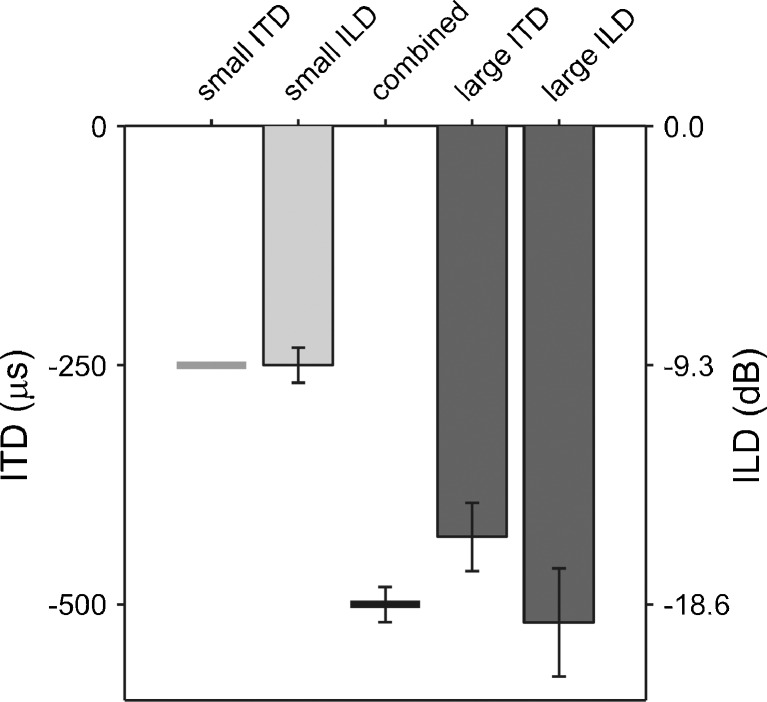FIG. 2.
Results from the lateralization matching experiment. The small ITD, which was fixed at −250 μs, is shown by the grey horizontal line. The small ILD (light grey bar) is the average ILD required to match the lateralization of the small ITD. Its value can be read off the right-hand ordinate. Note that the right-hand ordinate was scaled such that the small ILD appears equivalent to the small ITD. In the combined condition, the small ITD and small ILD were presented together. The black horizontal line shows the expectation that the lateralization of the combined stimulus is the sum of the lateralizations of its ITD and ILD components (small ITD and ILD). The large ITD and ILD (dark grey bars) are the average ITD (left-hand ordinate) and ILD (right-hand ordinate) required to match the actual lateralization of the combined stimulus. The error bars show the standard error across participants; the error bar on the combined condition is the same as that on the small ILD condition.

